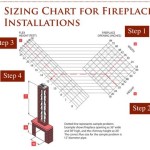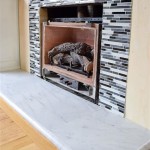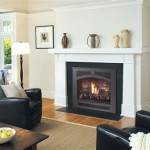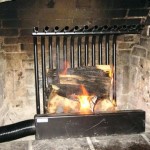How To Use a Fireplace Insert With Blower
A fireplace insert with a blower is a highly efficient heating appliance designed to transform an existing, often underperforming, masonry fireplace into a significant heat source. Unlike traditional fireplaces, which can lose a substantial amount of heat up the chimney, fireplace inserts are closed combustion systems that radiate more heat into the room. The integrated blower further enhances this efficiency by circulating the warmed air throughout the space, creating a more comfortable and consistent temperature. Understanding how to properly operate a fireplace insert with a blower is essential for maximizing its heating potential, ensuring safe operation, and prolonging the unit's lifespan.
This article provides a comprehensive guide on the proper usage of a fireplace insert with a blower, covering everything from initial setup to ongoing maintenance. It will outline the key steps involved in operating the appliance, addressing common issues, and highlighting safety precautions to consider. This information is intended for homeowners and individuals responsible for managing and maintaining a fireplace insert with a blower system.
Initial Setup and Preparation
Before operating a new fireplace insert with a blower, a thorough inspection and understanding of the unit's components are crucial. The first step involves carefully reviewing the manufacturer's manual. This document contains essential information about the specific model, including safety guidelines, operating instructions, and recommended maintenance procedures. Ignoring the manual can lead to improper usage, potential damage to the appliance, and voiding the warranty.
Verify that the insert is correctly installed according to local building codes and the manufacturer's specifications. Proper installation typically involves a certified professional who specializes in fireplace insert installations. This ensures that the insert is properly connected to the chimney liner, sealed against drafts, and that the electrical connections for the blower are safe and compliant. Incorrect installation can result in dangerous carbon monoxide leaks or fire hazards.
Clean the firebox before the first fire. Remove any dust, debris, or packing materials that may have accumulated during installation. Inspect the glass door for cracks or damage and ensure it seals tightly against the firebox. A properly sealed door is essential for maintaining efficient combustion and preventing smoke from entering the room. In addition, verify that the blower is correctly connected to the electrical supply and that it is functioning correctly by turning it on briefly. Listen for any unusual noises or vibrations that could indicate a problem.
Finally, ensure you have a working carbon monoxide detector installed in the room where the fireplace insert is located. Carbon monoxide is an odorless, colorless gas that can be deadly. A carbon monoxide detector will provide an early warning of any leaks, allowing you to take immediate action to protect yourself and your family.
Operating the Fireplace Insert
The process of lighting and maintaining a fire in a fireplace insert with a blower differs slightly from a traditional fireplace. The objective is to create a hot, clean-burning fire that maximizes heat output and minimizes creosote buildup in the chimney.
Begin by preparing the firebox. Use dry, seasoned hardwood as fuel. Softwoods tend to burn faster and produce more creosote. Split the wood into various sizes, including kindling, small pieces, and larger logs. Arrange the wood in the firebox using a top-down or modified top-down method. This involves placing the larger logs at the bottom, followed by progressively smaller pieces of wood and kindling on top. This method promotes efficient combustion and reduces smoke production.
Place a fire starter, such as a commercial fire starter or crumpled newspaper, beneath the kindling. Light the fire starter and allow the kindling to catch fire. Gradually add more small pieces of wood as the fire establishes itself. Avoid overloading the firebox with too much wood at once, as this can smother the flames and produce excessive smoke. Once the fire is burning steadily, add larger logs to maintain the heat output.
Regulate the airflow using the air controls on the insert. Most inserts have primary and secondary air controls. The primary air control regulates the amount of air entering the firebox from below, while the secondary air control regulates the air entering from above, which helps to burn off smoke and gases. Adjust the air controls to achieve a bright, clean-burning fire with minimal smoke. Experiment with different settings to find the optimal balance for your specific insert and wood type. Once the fire is burning well, engage the blower. The blower speed can typically be adjusted to control the airflow and heat distribution.
Monitor the fire and the blower frequently. Ensure that the fire is burning cleanly and that the blower is circulating the air effectively. Add more wood as needed to maintain the desired heat output. Check the chimney for excessive smoke, which could indicate incomplete combustion or a problem with the chimney liner. Keep a close watch on the temperature of the insert and avoid overheating it, as this can damage the unit and create a fire hazard.
Optimizing Blower Usage and Heat Distribution
The integrated blower is a critical component of a fireplace insert, significantly enhancing its heating efficiency. To maximize its effectiveness, understanding its operation and proper usage is essential.
The blower works by drawing cool air from the room, passing it over the heated firebox, and then circulating the warmed air back into the room. This convection process distributes the heat more evenly and efficiently than radiant heat alone. The blower speed is typically adjustable, allowing you to control the airflow and heat output. A higher blower speed will circulate more air, resulting in a faster and more widespread distribution of heat.
Consider the placement of furniture and other obstructions that could block the airflow from the blower. Ensure that the area around the insert is clear to allow for optimal air circulation. Position furniture strategically to direct the airflow towards areas that need the most heating. Using fans in other parts of the room can also help to circulate the warm air and create a more consistent temperature throughout the space.
Adjust the blower speed based on the heat output of the fire. During periods of high heat output, increase the blower speed to circulate the heat more quickly. During periods of low heat output, reduce the blower speed to prevent the room from becoming too cool. Some inserts have automatic blower controls that adjust the blower speed based on the temperature of the firebox, providing hands-free operation.
Clean the blower regularly to maintain its efficiency. Dust and debris can accumulate on the blower blades and motor, reducing its airflow and increasing its energy consumption. Disconnect the power supply to the insert and use a vacuum cleaner or compressed air to remove any dust or debris from the blower components. Regular cleaning will help to ensure that the blower operates efficiently and effectively.
Safety Precautions and Maintenance
Safety is paramount when operating a fireplace insert with a blower. Following safety guidelines and performing regular maintenance are essential for preventing accidents and ensuring the longevity of the appliance.
Never leave a burning fire unattended. Always supervise the fire and ensure that it is contained within the firebox. Keep flammable materials, such as curtains, furniture, and paper, away from the insert to prevent fire hazards. Install a fire screen or guard to protect against sparks and embers escaping from the firebox. Keep children and pets away from the insert to prevent burns and other injuries. Educate all members of the household about the safe operation of the fireplace insert.
Inspect the chimney regularly for creosote buildup. Creosote is a flammable substance that accumulates in the chimney as a result of incomplete combustion. Excessive creosote buildup can create a serious fire hazard. Schedule a professional chimney sweep to inspect and clean the chimney at least once a year, or more frequently if you burn wood regularly. Use a chimney thermometer to monitor the flue gas temperature and avoid burning fires that are too cool, as this can contribute to creosote buildup.
Maintain the insert on a regular basis. Inspect the glass door for cracks or damage and replace it if necessary. Clean the glass door regularly to remove soot and creosote buildup. Use a glass cleaner specifically designed for fireplace inserts. Inspect the firebox for cracks or damage and repair any issues promptly. Check the seals around the door and the chimney connector to ensure they are airtight. Replace any worn or damaged parts to maintain the efficiency and safety of the insert.
By following these guidelines and safety precautions, homeowners can effectively and safely utilize a fireplace insert with a blower, maximizing its heating potential and enjoying its benefits for years to come. Regular maintenance and adherence to safety protocols are essential for ensuring the proper functioning and longevity of the appliance.

Fireplace Inserts Everything You Need To Know Full Service Chimney

Best Wood Burning Fireplace Insert With Blower Forestry Reviews

Why Should I Get A Fireplace Blower For My Masonry
Made A Blower For My Fisher Insert Hearth Com Forums Home

Should I Use A Fireplace Insert Or Wood Stove To Heat Up My Home

Fireplace Inserts Everything You Need To Know Full Service Chimney

Blower Vs No Can I Add A To My Gas Fireplace

How Fireplace Inserts Work We Love Fire

Ventis Hei240 Fireplace Insert With Blower

Wood Fireplace Inserts With Blowers Upgrade Your








